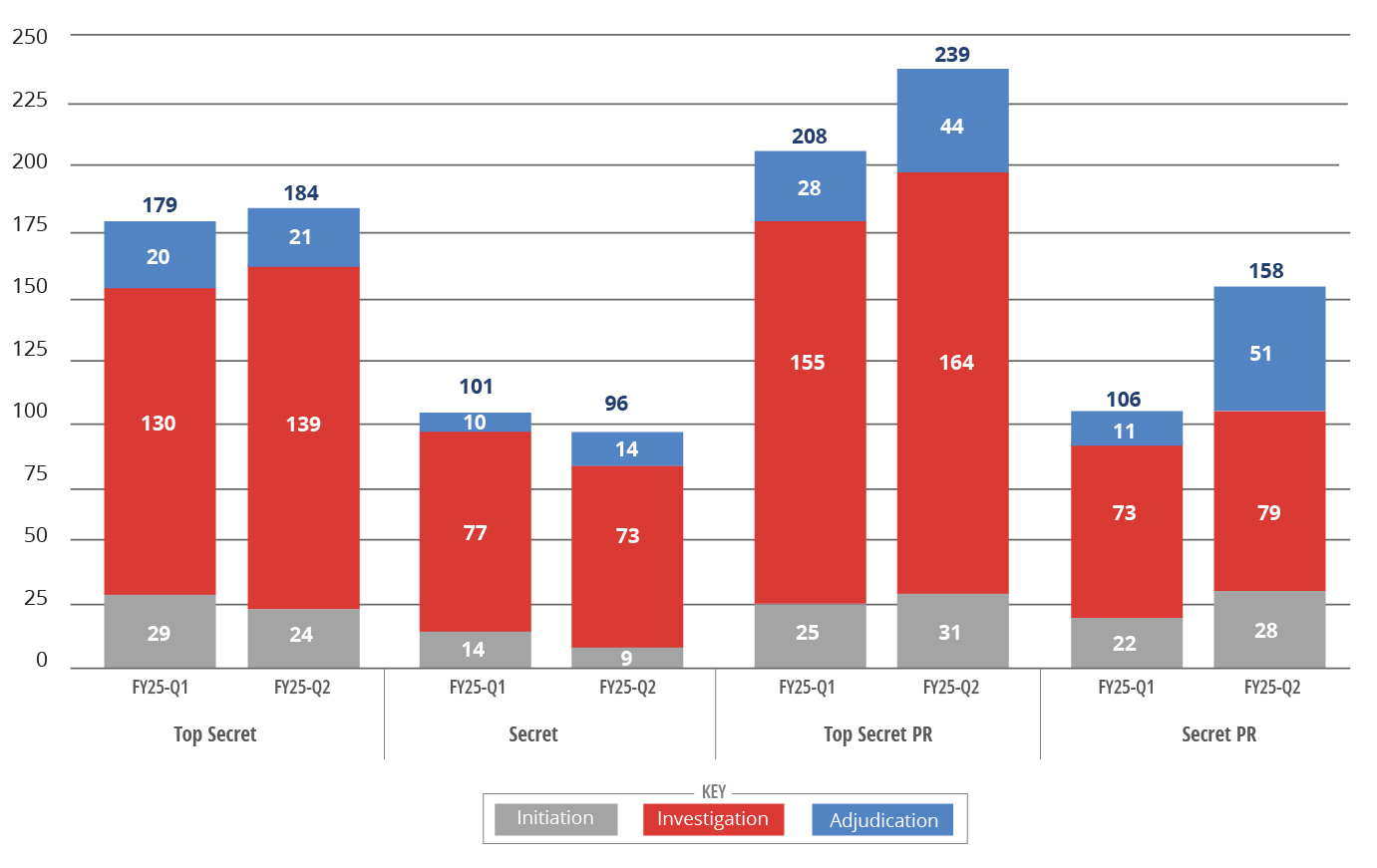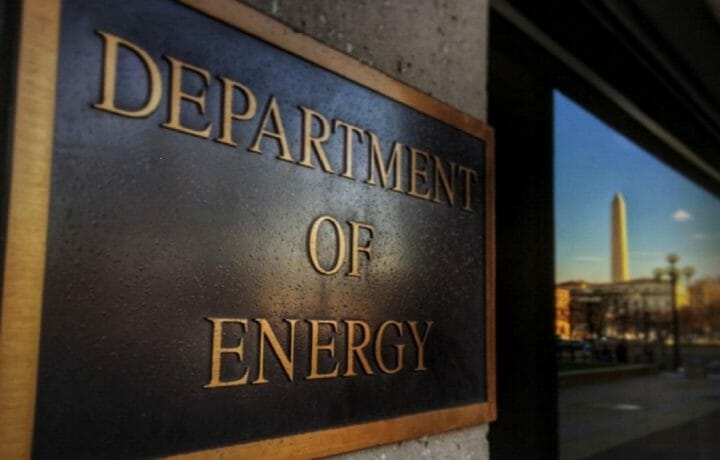At the latest National Industrial Security Program Policy Advisory Committee (NISPPAC) meeting, the Department of Energy (DOE) provided updated performance metrics for security clearance processing times. The new figures from the first two quarters of Fiscal Year 2025 give insight into how long it’s taking the DOE to process Top Secret and Secret clearances—including periodic reinvestigations (PR).
As in prior years, Top Secret clearances continue to take longer to process than Secret ones, and reinvestigations remain the most time-consuming. While the DOE made some modest gains in speeding up adjudications, overall processing times largely reflect the persistent complexities of handling high-level clearances tied to nuclear security and restricted data.
FY25 Q2 DOE Clearance Workload Snapshot
The DOE’s clearance processing times are broken down by phase: initiation, investigation, and adjudication. The chart below outlines the total number of days averaged for each clearance type.

Top Secret Reinvestigations remain the most time-intensive, averaging nearly 8 months (239 days) to complete in Q2. That’s a 31-day increase from Q1, driven in part by longer adjudication and investigation phases. On the Secret side, Q2 saw modest improvements in initial processing, with total days dropping from 101 to 96.
Understanding DOE’s Unique Clearance Structure
While the Department of Defense (DoD) typically leads the charge on clearance volume, the DOE plays a crucial role in managing access to sensitive information—particularly when it comes to nuclear-related programs. The DOE uses its own terminology: a Q clearance is roughly equivalent to a DoD Top Secret, while an L clearance parallels the Secret level.
Due to the nature of Restricted Data and special nuclear material, the DOE maintains slightly different adjudicative processes and timelines, which are necessary to address its specialized national security responsibilities. Even with reciprocity frameworks in place between the DOE and other federal agencies, certain projects or categories of information may warrant additional review.
Looking Ahead
The DOE’s clearance processing times in FY25 Q2 reflect ongoing challenges in handling high-clearance workloads, particularly reinvestigations. However, some bright spots—like faster Secret initial clearance times—suggest targeted improvements are underway. As the DOE continues to modernize its clearance processes, stakeholders will be watching closely for further reductions in processing times without compromising the rigor essential to national security.



